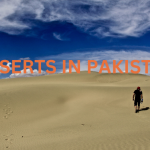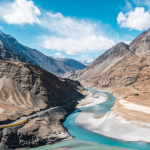Larkana: A Journey Through History & Culture
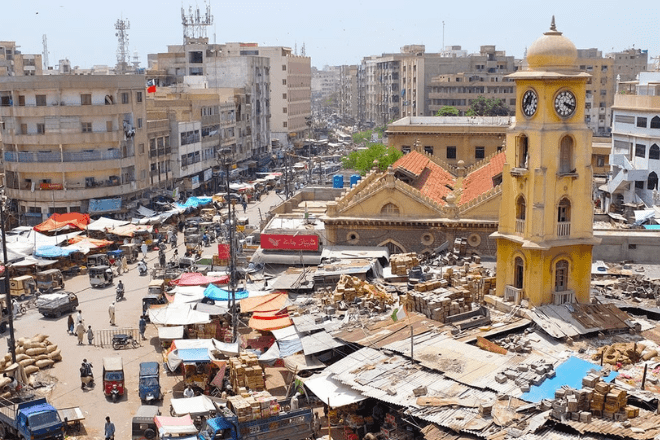
Larkana is located in the Sindh province of Pakistan. It beautifully embodies both historical brilliance and cultural richness. It’s known for its deep historical roots and vibrant traditions.
The city offers an enriching experience for travelers. Whether you’re interested in exploring its past or present, Larkana provides a significant and captivating destination.
Overview of Larkana, Sindh
Larkana, also known as Larkano in Sindhi, is a crucial cultural and historical landmark in northwestern Sindh, Pakistan. As the 15th largest city in the country by population, it is particularly renowned for being home to the historic Mohenjo-Daro, a key site of the Indus Valley Civilization.
Blending ancient heritage with modern development, Larkana captures the essence of Sindh’s rich legacy. The city was officially recognized as a district during British rule, further cementing its significance.
Additionally, its influence expanded notably during the Kalhora dynasty, highlighting its political, cultural, and economic importance.
Key Facts of Larkana
Features | Details |
Status | 17th largest city in Pakistan |
Location | 40 miles south of Shikarpur, 36 miles northeast of Dadu City, Sindh |
Historical Name (Till 1901) | Chandka |
Historical Significance | Linked to Indus Valley Civilization |
Prominent Era | Kalhora dynasty (1701-1783) |
District Status | Established under British rule |
This strategic location and historical significance make Larkana a key destination for those interested in exploring Sindh’s ancient and modern history. The city serves as a gateway to some of the most remarkable sites, reflecting its blend of ancient heritage and modern development.
Historical Background of Larkana

- Ancient Civilization: Mohenjo-Daro, a key site of the Indus Valley Civilization, is located 32 km west of Larkana. This UNESCO World Heritage Site, built around 2600 BCE, offers a glimpse into early urban planning and one of the world’s earliest urban centers.
- Colonial Era: Under British rule, Larkana developed into an important administrative and commercial center, reflecting its growing regional significance.
- British Developments: The British introduced essential infrastructure, such as roads and schools, and granted Municipal Committee status to Larkana in 1855, enhancing its civic framework.
- Modern Era: Larkana emerged as a political hub for the Bhutto family and was designated a divisional headquarters in 1988, highlighting its political importance.
- District Reorganization: In 2004, the creation of Kamber Shahdadkot district from Larkana marked a significant administrative change.
Cultural Heritage of Larkana, Sindh
Traditional Arts & Crafts
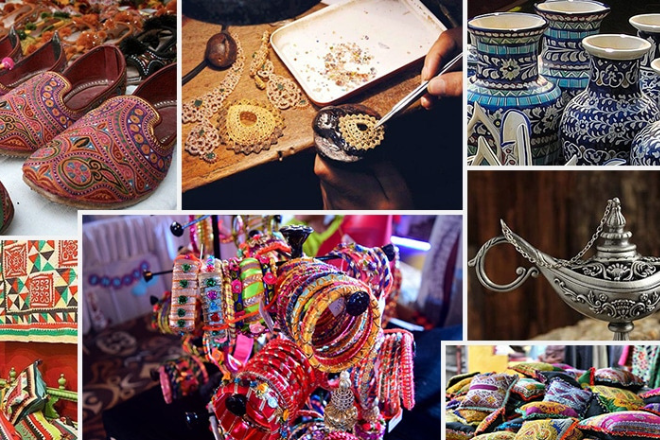
The cultural fabric of Larkana is rich with traditional arts and crafts, including intricate Sindhi embroidery, vibrant pottery, and weaving. The city’s artistry is evident in its detailed stitching and craftsmanship, reflecting the region’s deep-rooted artistic traditions.
Sindhi Ajrak & Topi
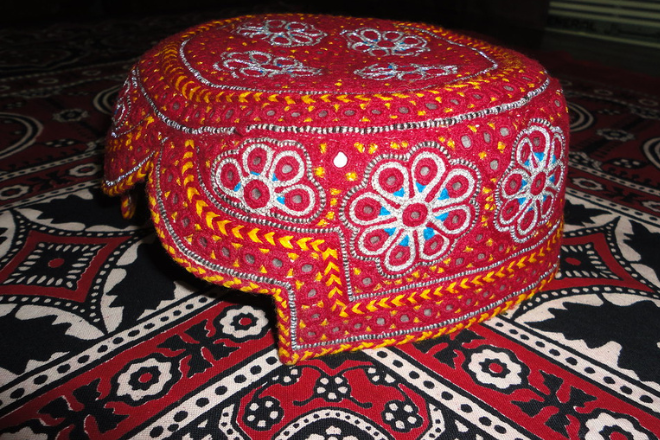
The Sindhi Ajrak and Topi are ideal symbols of Sindhi culture. The Ajrak, a block-printed shawl with elaborate designs and colors, is worn by men during various occasions, including social gatherings and festivals.
The Topi, a traditional cap, complements the Ajrak, embodying the pride and identity of the Sindhi people.
Customs and Traditions
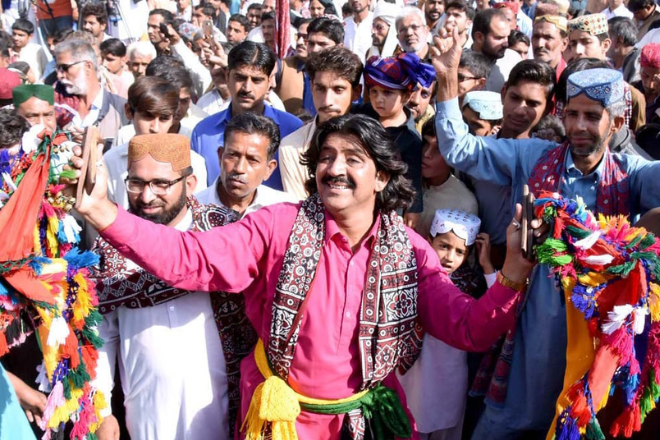
Larkana’s customs and traditions are deeply rooted in its cultural heritage. The city is known for its reverence for Pirs and Murshids, with locals from both rural and urban areas visiting their shrines to perform various rituals and Urs ceremonies.
Notable shrines include those of Syed Qasim Shah Bokhari and the Bhutto family, among others. These practices highlight the city’s rich spiritual and cultural traditions.
Traditional Games
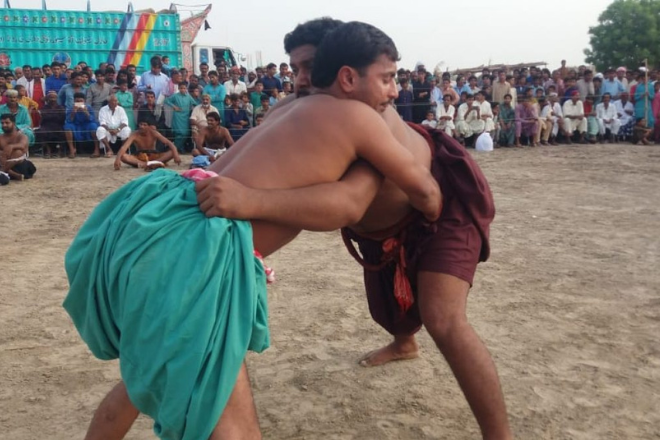
Larkana boasts a vibrant sports culture, highlighted by its role in the Sindh Games, which feature a mix of modern and traditional sports. The city hosted the 12th Sindh Games in 2009, showcasing a variety of traditional games like Kodi Kodi and shooting, which celebrate local cultural heritage.
Cricket is particularly prominent, with the Larkana Bulls cricket team representing the city. Additionally, the Larkana Tennis Association supports local talent with dedicated facilities and coaching for aspiring tennis players.
Festivals and Events
- Cultural Events
Larkana celebrates a variety of vibrant festivals and events throughout the year. Key festivals include Sindhi Topi and Ajrak Day and Folk Song Festivals, which showcase traditional Sindhi culture.
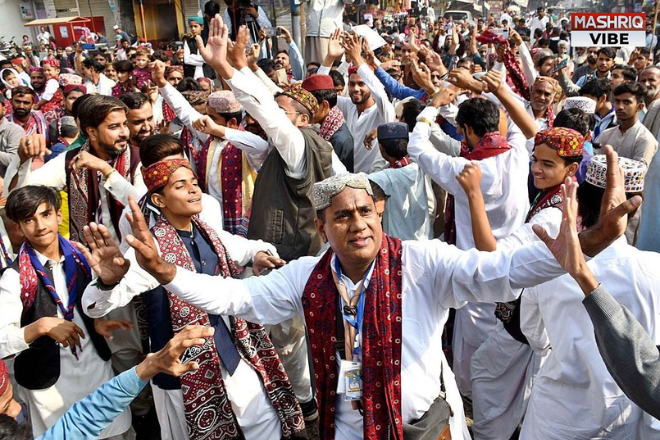
These events feature traditional songs and performances with musical instruments like the yaktaro, dholak, and tabla. The traditional Jhoomar dance, popular at weddings and festivals, highlights the local spirit.
- Religious Festivals
The city also observes significant religious festivals, including Eid-ul-Fitr, Eid-ul-Adha, and the annual Urs of various Sufi saints. These festivals are marked by elaborate celebrations, prayers, and communal feasts.
Larkana Local Cuisine
Ancient civilizations and cultural exchanges along the Indus River shape Larkana cuisine. Its food embodies the region’s heritage and resilience through its rich, traditional dishes. Some of these are:
Dish | Description |
Saag | Leafy greens cooked with spices to create a nutritious and flavorful side dish. |
Dal Pakwan | Spicy chana dal served with crispy fried flatbreads creates a tasty and flavorful Sindhi breakfast. |
Koki | A hearty, spiced flatbread often paired with yogurt or chutney. |
Seyal Mani | Minced meat in a rich, spiced tomato-onion gravy, served with bread or rice. |
Sai Bhaji | A spinach and lentil stew cooked with mixed vegetables and spices. |
Sindhi Biryani | Aromatic rice layered with marinated meat and spices slow-cooked to perfection. |
Top Attractions in Larkana
Mohenjo-Daro
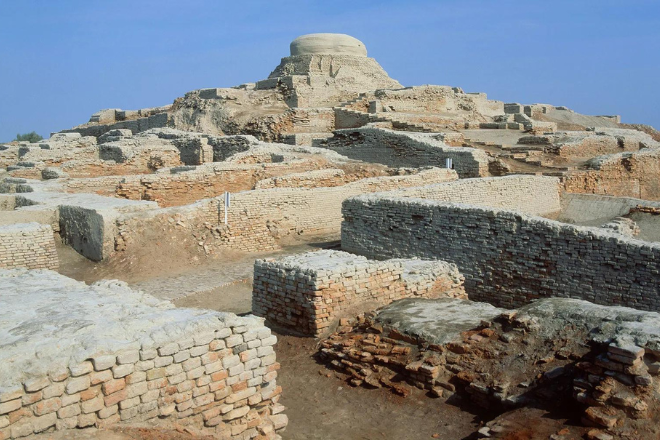
Mohenjo-Daro is a key archaeological site of the ancient Indus Valley Civilization. The site’s well-preserved ruins offer a fascinating glimpse into early urban planning and architecture.
Jinnah Park
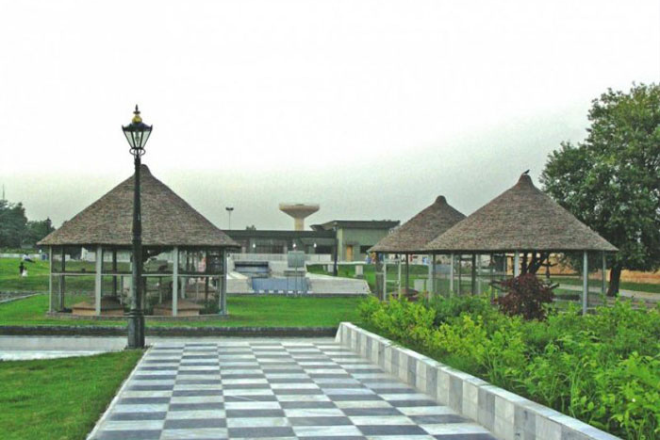
Jinnah Bagh is a serene park in Larkana, known for its lush greenery and peaceful ambiance. It’s an ideal spot for locals and visitors alike to unwind, especially in the evenings, offering a beautiful space for families to gather and enjoy leisurely activities amidst nature.
Shahnawaz Bhutto Public Library
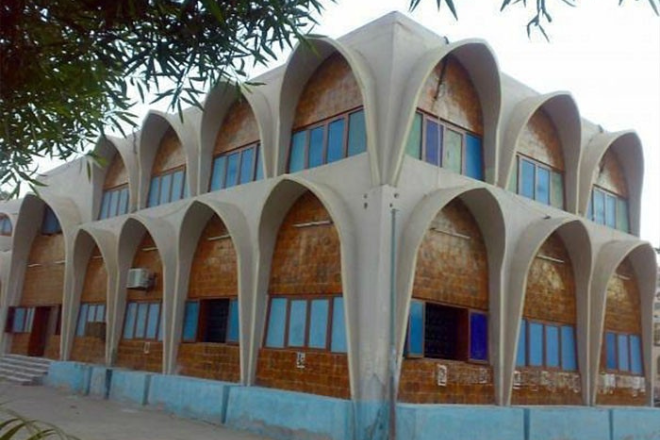
Shahnawaz Bhutto Public Library was established in 1984. The library is a hub for learning and preparation, helping numerous students excel in competitive exams each year. It also holds a collection of books and documents related to Sindh’s history and culture.
Bhutto Family Mausoleum
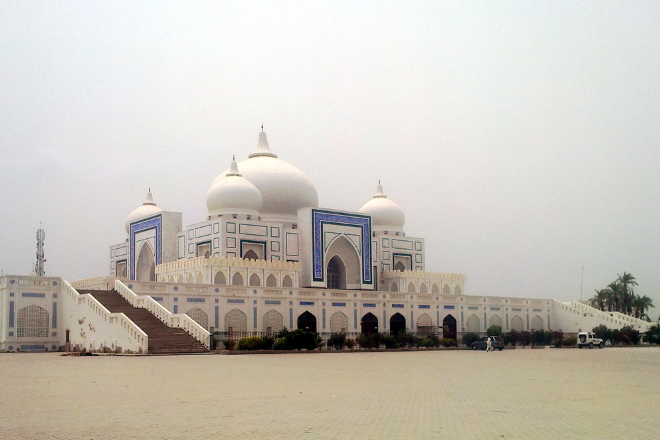
The Bhutto Family Mausoleum is an important political and historical site. Established in 1979 after Zulfikar Ali Bhutto’s burial, the mausoleum honors the family’s heritage with its striking white marble structure, adorned with Sindhi Hala patterns, glazed tiles, calligraphy, and fresco work.
Shahbaz Khan Mosque
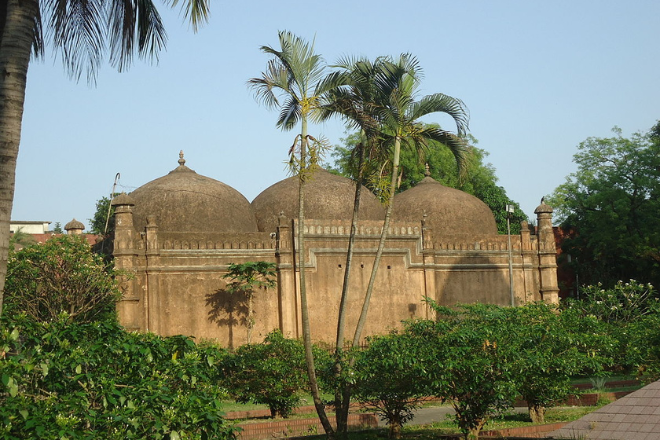
Nestled in the heart of Larkana, Shahbaz Khan Mosque is an architectural gem from the Mughal era, built during the reign of Emperor Shah Jahan. The mosque beautifully blends Mughal and Sindhi styles, featuring intricate calligraphy, delicate tile work, and an impressive design that reflects the grandeur of its time.
Larkana Weather: Best Time to Visit
- Summer: From May to August, Larkana experiences extremely hot temperatures, often exceeding 40°C (104°F). This intense heat makes summer less ideal for travel.
- Winter: The months of November to February offer cooler temperatures ranging from 10°C to 25°C (50°F to 77°F), providing a more pleasant climate and making it the best time to visit Larkana.
- Monsoon: From July to September, the monsoon season brings moderate to heavy rainfall, which adds lush greenery to the landscape but may cause occasional travel disruptions.
Most Accessible Travel Routes
City | Distance (by road) | Travel Time |
Karachi to Larkana Distance | 455.7 km | 6 hours |
Sukkur to Larkana Distance | 82.9 km | 1 hour, 30 minutes |
Hyderabad to Larkana | 313 km | Almost 5 hours |
Islamabad to Larkana | 1,037 km | Almost 12 hours |
Quetta to Larkana | 396 km | Almost 7 hours |
Lahore to Larkana | 847 km | Almost 10 hours |
Gilgit to Larkana | 1,508 km | 23 hours |
Accommodations in Larkana
- Top Larkana Hotels: Larkana offers a range of hotels catering to various preferences and budgets. From luxurious stays to more affordable options, you’ll find many Larkana hotels that provide comfortable accommodations and convenient amenities.
- Budget Accommodation Options: For travelers seeking budget-friendly choices, Larkana features several guesthouses and budget hotels. These establishments offer basic amenities at affordable rates, ensuring a comfortable stay without breaking the bank.
Travel Tips for Larkana
- Stay Hydrated: The weather can be quite hot, especially in summer. Carry a reusable water bottle to keep yourself hydrated and avoid prolonged exposure to the sun.
- Use Local Transportation: Taxis and rickshaws are common in Larkana. Ensure you agree on the fare before starting your journey to avoid misunderstandings.
- Stay Connected: Have a local SIM card or ensure your international phone plan covers data and calls. This will help you stay connected and navigate the city easily.
- Respect Local Customs: Be aware of and respect local traditions and customs. This will help you have a more enjoyable and culturally integrated visit.
- Packing Essentials: Given Larkana’s hot climate, pack sun protection items like sunglasses, a wide-brimmed hat, and sunscreen. Also, bring lightweight clothing, comfortable walking shoes, and a light jacket for cooler evenings.
- Emergency Numbers: In case of emergencies, the local emergency number for police is 15 or 047-9410425. Keep these numbers handy during your trip.
Conclusion
A tour of Larkana offers a captivating blend of ancient history, vibrant culture, and modern charm. From exploring the ancient ruins of Mohenjo-Daro and experiencing the city’s rich culinary traditions to visiting significant landmarks and immersing yourself in local festivals, Larkana promises a memorable journey.
Whether you’re delving into its historical roots or enjoying its contemporary developments, Larkana provides a unique and enriching travel experience in the heart of Sindh.
Guide to Pakistan is a valuable resource for discovering the country’s diverse attractions. It provides detailed information on various tourist spots, cultural sites, and natural landscapes. With insights on local customs, accommodations, and travel routes, it helps travelers explore Pakistan’s rich heritage and scenic beauty.
Frequently Asked Question
What is Larkana famous for?
Larkana is renowned for its historical significance, particularly the archaeological site of Mohenjo-Daro.
What language do they speak in Larkana?
The primary language spoken in Larkana is Sindhi, with Urdu and English also used, especially in official and educational contexts.
What is the famous fruit of Larkana?
The famous fruit of Larkana is guava, known for its unique taste and high quality.
Why is Larkana called Eden of Sindh?
Larkana is often referred to as the Eden of Sindh due to its lush landscapes, historical significance, and cultural richness, resembling the beauty and prosperity of Eden.


